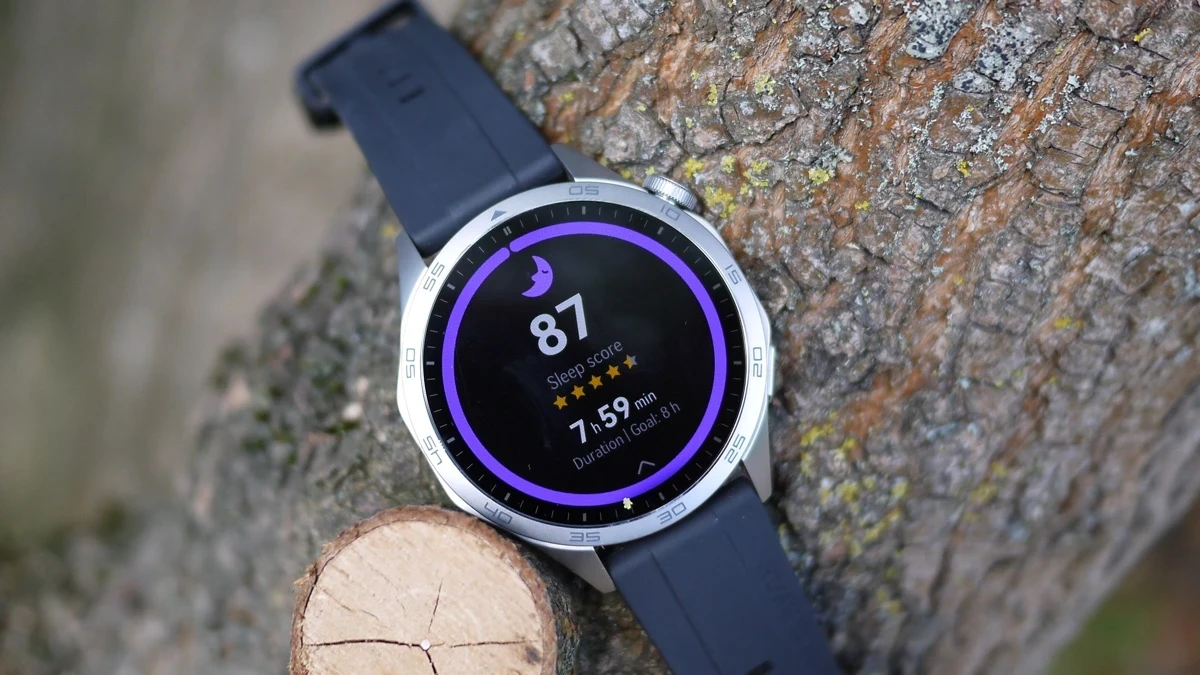
Sleep tracking is a core feature of the Huawei Watch GT 4 – and other members of the Huawei smartwatch line-up.
In our reviews of Huawei smartwatches, we’ve praised sleep tracking for being particularly effective at helping users analyze and improve sleep quality.
That’s because of the large array of sleep metrics, all of which are individually rated, making it easy to see which aspect of sleep you can improve on.
But that also means there are a lot of metrics to understand. So in this guide, we outline each one and explain what they mean and how to use them.
Huawei sleep tracking metrics explained
Huawei Health can automatically track your sleep when you wear a compatible Huawei wearable device.
It records the following sleep data:
- Total sleep duration – The total sleep for the night. The United States National Sleep Foundation recommends 6-10 hours.
- Time spent in light sleep, deep sleep, and REM sleep – Healthy sleep cycles through these stages multiple times. Your Huawei smartwatch will ensure you spend adequate time in each.
- Wake-up times – Huawei will track nighttime disturbances, provide analysis on whether that is normal or abnormal, and offer advice on reducing wake-ups.
- Breathing quality – An important score, this tracks how you breathe during sleep and looks for irregularity in your breaths. This can point to several health issues, particularly sleep apnea, which is a serious health condition.
- Deep sleep continuity – This refers to the length of time spent in the deep sleep stage, which is a crucial state that stabilizes mood and restores energy.
- Sleep score – All of these factors feed into the overall sleep score. Graded out of 100, it’s a quick reference for the quality of your rest. Low sleep scores (below 80) can be worth investigating using the granular stats above, to see if there are areas that can be improved.
While sleep duration is the key metric to keep an eye on, it’s also worth checking data such as deep sleep continuity and wake-up times. These can be indicators of poor sleep hygiene, which can mean things such as light or noise disturbing you.
Having granular detail in this way makes the Huawei sleep tracking effective.
Huawei sleep analysis features
Wareable
Huawei Health provides a detailed analysis of your sleep data, including:
- Sleep trends over time – You can view historical data over time within the Huawei Health app. Tap Sleep on the Health screen to view your data by day, week, month, or year.
- Sleep breathing analysis – A new feature added to Huawei Health, this offers a deeper analysis of your breathing quality. It’s part of the new Huawei Watch GT 4 and TruSleep 3.0 algorithms.
- Snoring and talking detection – When using the Sleep Sounds feature, it can also record sleep talking and snoring, and store the recordings in Huawei Health. Tap on Record Sleep within the Huawei Health app to choose your bedtime and wake-up times, and keep your smartphone within 50cm. You can retrieve recordings by choosing Sleeping Sounds from the menu.
- Sleep sounds – Within the Record Sleep mode on your smartphone app, Huawei can also play sleep sounds that can help you relax and fall asleep more easily. You can also set a timer for the sound to be turned off.
- Smart alarm – The smart alarm wakes you up during a light sleep stage, so you feel more refreshed when you wake up. Open the Huawei Health app, tap Devices, your device, Alarm > Smart Alarm.
Enable Huawei Health sleep tracking
Wareable
To use Huawei Health sleep tracking, you will need a compatible Huawei wearable device.
All Huawei smartwatches, including the new Huawei Watch GT 4, will track sleep out of the box.
You may also need to turn on more advanced aspects of Huawei sleep tracking.
Go to the Huawei Health app > Devices > choose your device from the list. In settings, you go to Health Monitoring. From there ensure that Huawei TruSleep is enabled. Also check for settings such as Continuous Heart rate monitoring, Continuous skin temperature measurement, and Sleep breathing analysis.
We found in our reviews that many of these are turned off by default, so you might not be getting as much data as possible if you haven’t dived into the settings of your Huawei smartwatch.
Remember that some of these metrics will deplete battery life more quickly. We do feel that getting the extra detail is worth the loss in battery life – but that will be a personal choice for users.
Tips for getting the most out of Huawei Health sleep tracking
- Wear your Huawei wearable device to bed every night.
- Make sure your Huawei wearable device is snug but comfortable.
- Avoid wearing your Huawei wearable device too tightly, as this can restrict blood flow.
- Keep your Huawei Health app up to date.
How we test
